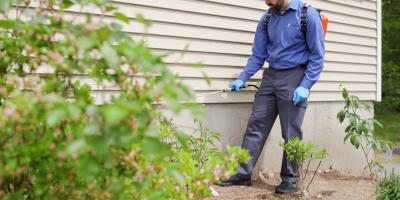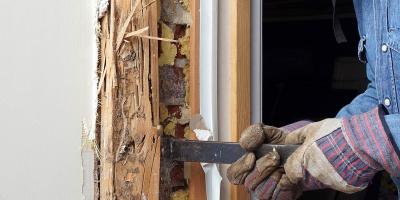Make Your Home a No-Fly Zone

As one of the most common global household pests, flies have a biological advantage when it comes to reproducing in incredibly large numbers. Combining short gestation periods – some as fast as 12 to 24 hours – with the ability to lay 375 to 600 eggs at a time, flies are able to reproduce at a far faster rate than fly swatters can ever keep up with.
So, how can you make your home a no-fly zone?
Festering Fly Facts
Add to their rapid gestation period the fact that flies don’t really discriminate about where they lay their eggs (feces and garbage are popular fly hatchery locations) and you’ve got an ever-growing airborne army of pests.
Making matters even worse, there are several distinctly different species of flies, each with their own preferences and habits, which makes it difficult to come up with one set of measures that will effectively prevent all flies from invading.
That said, when it comes to strategizing against a fly infestation, the best place to begin is with what they all have in common, starting with where they breed and what attracts them to your home in the first place.
Houseflies prefer to breed in damp, often filthy places. That’s why excrement and garbage containing food waste are so appealing. Fly eggs need high levels of moisture, and those are two particularly abundant places to find it.
That means most species of flies will be attracted to homes and businesses without proper sanitation disposal procedures in place. Garbage cans without lids, spills that aren’t promptly cleaned up, and excessive pet waste accumulating in the yard or house are all situations that will attract more flies.
Once you’ve eliminated any cleanliness and sanitation problems, knowing some specific information about common species of flies will help dial in a more customized approach to controlling them. There are six distinct species of flies that are responsible for many of the local fly infestations, each with its own telltale signs:
Housefly (Musca domestica) – A dull gray, quarter-inch long bug-eyed fly with four dark stripes on its middle section. The common housefly loves garbage and filth, so keeping a clean house will go a long way toward prevention.
Cluster fly (Pollenia rudis) – Similar in appearance to houseflies, but with parallel (not triangular) wings and lacking stripes, cluster flies are not drawn to filth. The best way to keep them out is to seal up any small cracks or holes where they could gain entry into your house.
Fruit fly (Drosophila spp.) – Also called vinegar flies, they’re attracted to sweet and/or fermented liquids like alcoholic beverages or rotting fruit. Dispose of food waste in a covered outdoor receptacle as soon as possible to avoid fruit flies.
Drain fly (Psychodidae spp.) – Slightly larger than the rest, these flies are known to infest sewer and drainage systems. Cleaning drains and traps of debris will help keep them away.
Phorid fly (Phoridae spp.) – These dark, humpbacked flies feed on decomposing debris, including both dead plants and animals. Phorid flies often emerge from drains, particularly if the drain or pipe is clogged with organic matter (think discarded food scraps that accumulate after you’ve piled dishes into the sink). Keeping the drain clean of this organic debris and using a biological drain cleaner every two weeks should do the trick.
Fungus gnat (Sciaridae and Fungivoridae spp.) – These tiny, delicate flies love water and are especially attracted to the moisture found in the soil of indoor houseplants, where they like to lay their eggs. Although completely harmless to humans, fungus gnats can wreak havoc on your plants and require consistency in prevention and treatment. Try using food-grade diatomaceous earth (DE), available at most hardware stores, along the surface of the plant’s soil to combat existing fungus gnat populations.
Considering the number of fly species in existence -- more than 120,000 world-wide; 18,000 of which are found in the United States! -- properly identifying which type has entered your home can prove tricky. As difficult as it is to distinguish one species from another, locating the source and effectively treating them usually proves to be even more complicated. All told, this is why relying on professionals to monitor and take care of the problem is the optimal option to make your home a no-fly zone.
Want to get a second set of eyes on your drain pipes and houseplants? Consider a pest maintenance program for your home.



